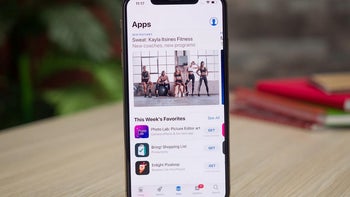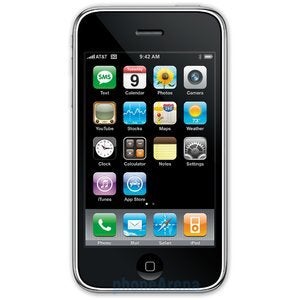Apple's App Store takes advantage of lockdowns to score its best monthly growth since 2017

As it turns out, a pandemic that forces people to stay at home is actually good for some businesses. Grocery delivery services like Shipt and Instacart have seen business boom as have companies that make hand sanitizer, toilet paper, and paper towels. Also doing well during the COVID-19 outbreak has been Apple's App Store. This makes sense since people are working from home and installing the appropriate apps on their iPads. They also are downloading games, streaming content apps, and more on their iPhone and iPod touch units.
Last month showed the strongest growth for the App Store since September 2017
According to TheStreet, Morgan Stanley tech analyst Katy Huberty told her firm's clients today that April was the strongest month for the App Store since September 2017. Data from Sensor Tower indicated that year-over-year App Store revenue soared 31% in the month. On a sequential basis, April saw a 19% gain in App Store revenue compared to the numbers reported for March. Total downloads for the month grew 40% from the same month last year. That was the strongest monthly year-over-year growth rate for App Store downloads since Morgan Stanley began tracking this particular metric in 2015; Morgan Stanley says that April was the fourth consecutive month of increasing app store downloads.

The App Store opened in July 2008 on the iPhone 3G
Huberty noted that nine out of the top ten countries in terms of generating App Store revenue had top-line growth in April. These 10 countries account for 90% of the App Store's revenue and only Australia had slower revenue growth on a sequential basis. In March, Apple announced that the App Store is coming to 20 new countries including Afghanistan, Gabon, Cote d'lvoire, Georgia, Maldives, Serbia, Bosnia and Herzegovina, Cameroon, Iraq, Kosovo, Libya, Montenegro, Morocco, Mozambique, Myanmar, Nauru, Rwanda, Tonga, Zambia, and Vanuatu.
The App Store is part of Apple's Services division. In a brilliant move, the company decided in 2016 to focus on its services revenue as iPhone unit sales had peaked the year before. Apple set a goal of doubling Services revenue from the $25 billion it collected in fiscal year 2016 to $50 billion during the current fiscal year. Apple just released its fiscal Q2 numbers a few days ago and for the second consecutive quarter, Services revenue ran at a rate above $50 billion. In fact, for the first half of this fiscal year, Apple collected $26 billion in Services revenue.
By focusing on the large number of active iPhone units (approximately 900 million), Apple can collect recurring subscription fees from Apple Music, Apple Arcade, Apple News+, and Apple TV+ subscribers. And the Services division also includes the App Store, AppleCare+, iCloud and more. While Huberty wrote that, "These results continue to confirm that the app economy is healthy and that the App Store will remain a beneficiary of social distancing and increased mobile engagement," she also noted that April will be the peak of App Store revenue growth. She comes to that conclusion because several countries are easing up on lockdown restrictions. The analyst says that there is a shot that Apple will exceed her forecast for 18% growth in App Store revenues for June.
The App Store opened its doors on July 10th, 2008 with 500 apps for the iPhone 3G. Apple soon kicked off an ad campaign with a tag line that became iconic: "There's an app for that." Believe it or not, as of the first quarter the Google Play Store has many more apps available than the App Store. According to Statista, the Google Play Store listed 2.56 million apps compared to the 1.85 million apps in the App Store. Even though there are more apps in the Google Play Store and Android has 85% of the global smartphone market, the App Store generates more revenue for developers year-after-year.
As of March, iOS app developers have collected $155 billion from the sale of paid apps and in-app purchases since the App Store opened. Since the Android Market launched (now the Google Play Store of course), developers for the platform have been paid $80 billion. Why the large gap? The theory is that because many there are so many low-priced Android phones that are sold in developing markets, these users don't have the money to purchase as many apps or make as many in-app purchases as iOS users.
Back in 2018, a survey showed that 20% of iOS users check the App Store daily while 32% perform the task on a weekly basis. At the same time, only 9% of Android users visit the Google Play Store once a day while 21% visit weekly.










Things that are NOT allowed: